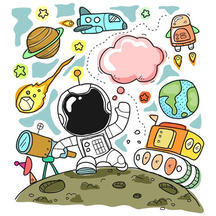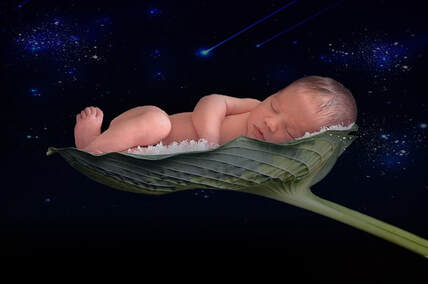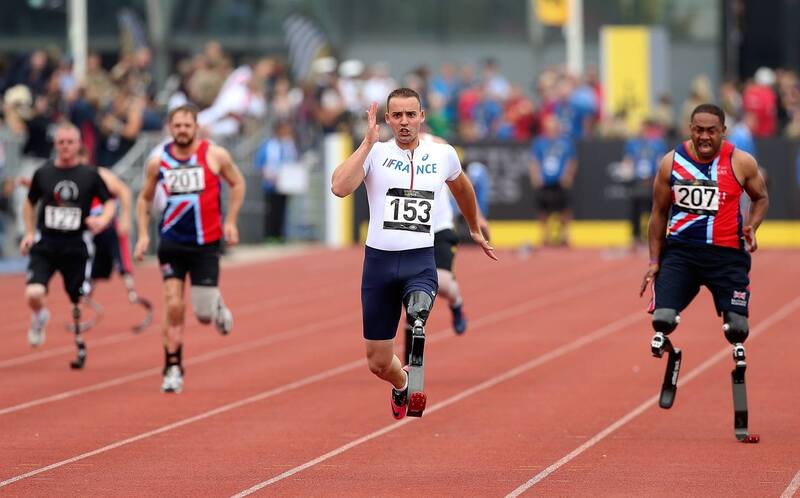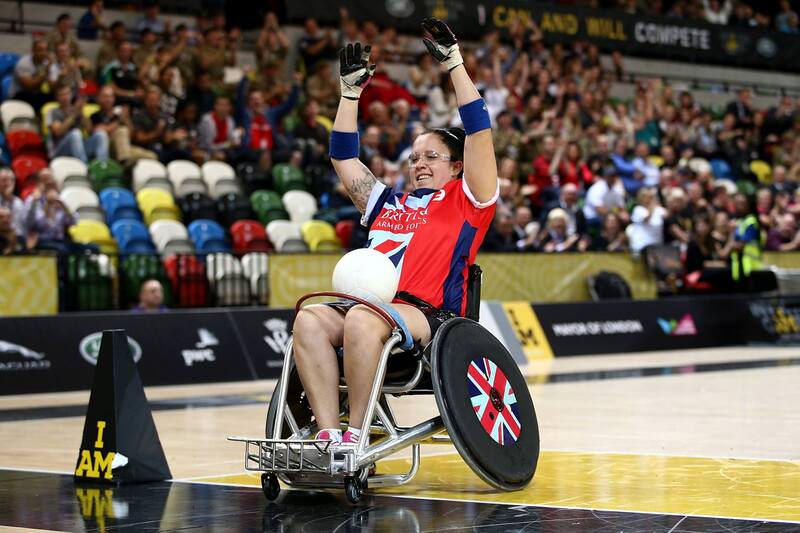Rosemary S. A. Shinkai, DDS, MSc, PhD Professor of Dentistry, Pontifical Catholic University of Rio Grande do Sul, Brazil
We still do not know much about the changes in dental and orofacial structures, functions, and diseases beyond Earth. Early studies on aerospace dentistry published at the end of the 1960’s and 1970’s addressed some concerns about oral health in astronauts and challenges for dental treatment delivery in space. If astronauts are selected for being the most prepared and healthy humans to withstand the hard conditions in outer space, what about everyday regular people, the very young or old individuals? Or pregnant space voyagers? Microgravity and radiation in long-term spaceflights and a lifelong stay in space stations or settlements would require specific oral health care. Teeth, gums, tongue, bones, and muscles are part of a complex system, which is highly innervated and irrigated by blood vessels to allow chewing, swallowing, speaking, and smiling. Saliva is produced by a number of large and small salivary glands to lubricate the mouth, form the food bolus, and counterbalance acids produced by mouth bacteria after meals. Recent studies have shown that the microgravity and spaceflight environment alters jaw bone physiology, dental development, saliva proteins, and salivary gland morphology in mice flown on a US shuttle and a Russian biosatellite. Another study revealed that adult rats submitted to gravity tests showed remodeling of craniomandibular bones. Simulated microgravity also modified gene expression and physiology of Streptoccocus mutans and Streptoccocus sanguinis, possibly altering the cariogenic potential of these bacteria. However, the specific effect of space radiation also needs to be investigated.  Will oral health care need adapting for long-term Mars settlement? Will oral health care need adapting for long-term Mars settlement? It still is unknown to what extent the same effect would occur in human astronauts. Besides the potential structural and physiological changes in the craniomandibular system, other behavioral factors and epigenetics are involved in space oral health. For example, dental caries result from a frequent exposure to acids produced by mouth bacteria after ingestion of sugar, mainly sticky or soft, paste-like foods. Thus, eating and cleaning habits modify the risk for dental caries. And the protective saliva flow and composition vary with water drinking, chewing stimulation, medication, and stress. All these factors may be altered in space life and would affect individual responses to not only dental caries risk, but also gum inflammation, orofacial pain, bone loss and repair. Understanding the underlying mechanisms to prevent oral health problems and have effective interventions seems to be appropriate for the planning of long-term space travel. So, space dentistry may be an interesting job in the future! Prof. K. Ganapathy InnovaSpace Advisory Board member, Past President Telemedicine Society of India, Former Secretary/Past President Neurological Society of India & Indian Society for Stereotactic & Functional Neurosurgery, Emeritus Professor Tamilnadu Dr MGR Medical University, Former Adjunct Professor IIT Madras & Anna University Madras, Founder Director, Apollo Telemedicine Networking Foundation & Apollo Tele Health.  Three decades ago even contemplating the subject of the human brain in space would have been considered preposterous. Two decades hence and Extra Terrestrial Neurosciences could become a distinct sub-speciality. With periods of stay in the International Space Station steadily increasing, manned missions to the Moon being revived, and even humans going to Mars being seriously planned, it is imperative we know what happens structurally and functionally to various parts of the human brain when it is exposed to microgravity and cosmic radiation for prolonged periods. This is no longer a theoretical academic discussion. For decades we have relied on experimental simulation studies on the brains of rats exposed to microgravity and cosmic radiation. Mice exposed for six months to the radiation levels prevalent in interplanetary space exhibited serious memory and learning impairments, also becoming more anxious and fearful. Structural changes at a microscopic level, including changes in neurotransmitters were demonstrated.  It is only in the last decade that reliable, prospective clinical and sophisticated imaging studies have been carried out on astronaut brains before and after exposure to real world conditions. The human brain was primarily designed for standing in gravity on Earth with almost no exposure to radiation. When we leave the Earth’s gravitational pull all bodily fluids move upward. The first evidence for structural changes in the brain after long-term spaceflight includes narrowing of the central sulcus, a shrinking of the cerebrospinal fluid (CSF) spaces at the vertex, and an upward shift of the brain. MRI scans before spaceflight, shortly after and several months after return to Earth revealed a significant increase in size of the lateral and third ventricles immediately post-flight and a trend towards normalization at follow-up. There was an upward shift of the brain after all long-duration flights. Significant volumetric gray matter decreases, including large areas in the temporal and frontal poles and around the orbits have been documented. This effect was more noticeable in crewmembers with prolonged stay in the International Space Station. Bilateral focal gray matter increases within the medial primary somatosensory and motor cortex (cerebral areas representing lower limbs) were noted. Cortical reorganization in an astronaut’s brain after long-duration spaceflight has now been confirmed. MRI documented structural changes raise the risk of possible impairment of behaviour, cognition and performance. This could compromise mission critical decisions. In 2017, a study revealed that long missions in space results in reduction of protective CSF surrounding brain volume at the top of astronauts’ brains. These changes underlie the astronauts’ performance on certain critical tasks, such as opening the space station’s hatch, climbing a ladder, exiting a vehicle or even walking along the surface of a planet. Follow up MRI scans have revealed that re-exposure to Earth’s gravity and lack of continuing exposure to unnatural radiation can generally reverse these space travel induced changes. Astronauts have to undergo extensive training before and during spaceflight to maintain muscle mass, and this can result in localised increased grey matter, particularly in the sensorimotor regions of the brain, representing the lower limbs. This is due to neuroplasticity or adaptation within the cerebrum and cerebellum. The most notable findings in the MRI’s were a post-flight increase in the stimulation-specific connectivity of the right posterior supra marginal gyrus with the rest of the brain; a strengthening of connections between the left and right insulae, decreased connectivity of the vestibular nuclei, right inferior parietal cortex and cerebellum with areas associated with motor, visual, vestibular, and proprioception functions. Study of permanent visual acuity impairments associated with spaceflight have demonstrated structural changes in the CSF around the optic nerves and the globe of the eyes.
Domain expertise in Extra Terrestrial Neurosciences will eventually be a reality. While the number of subjects studied may at the best be a few hundreds, the lessons learnt could make us relook at the traditional neurosciences we have been believing in for the last two centuries. Let us never forget that the future is always ahead of schedule !! Fabrício Edler Macagnan PhDAssistant Professor, Dept of Physical Therapy, Graduate Program in Rehabilitation Sciences Can technology really be seen as something unnatural? Or is it plausible to assume that all the evolutionary processes developed on our planet have been truly responsible for our ability to promote evolution (transformation) in a fully conscious and directed manner? Well, if this is true, then we can say that “all technology is eminently a natural manifestation of the evolutionary process.”  In the ongoing developmental process, how many different random combinations were needed to enable the evolution of simple inorganic compounds into extremely complex living organisms, capable of interpreting, acting and reacting to environmental events? In the animal kingdom, we find numerous individual and collective actions that occur to ensure the preservation of species. Each of these strategies have been tested for efficiency by the process of natural selection, and from this perspective it can be said that the validation of a viable adaptation represents a natural manifestation of biotechnological development. These acts of biotechnological development range from behavioural patterns that are beneficial for preservation of the most adapted genes and, consequently, more prone to reproductive success, through to defence techniques using chemical substances capable of triggering complex and fatal metabolic reactions in opponents (to this day, the pharmaceutical industry maintain strong interest in these biotechnologies). There are numerous evolutionary strategies that could be described, but in short, each of these adaptations (strategies) could be framed under the concept of technology, as technology involves the systematic study of techniques, processes, methods, means and instruments that are used to achieve a determined goal. The great difference between the processes occurring at the beginning of species evolution and those that now occur is really the most remarkable fact of all development – the ability to become aware of certain processes of existence (life). Whenever I stop to think about it, I’m extremely curious to know at what point in evolution did the ability emerge of being able to connect information from different body movement receptors (sensors) in a sufficiently organised way to permit repetition (from a sequence of carefully and efficiently stored historical events) of the intensity, direction, and reaction of forces acting on moving bodies to the point of making interpretation and reaction intentionally directed for one's own benefit. This intricate capacity for historical analysis has enabled numerous evolutionary advances in species, which have since developed techniques for collecting, hunting, fighting and defending, whether individually or collectively, with such efficiency that survival in ensured, even in the face of drastic environmental transformations. Even more noticeable has been the developments in language and writing, a crucial step for storing and sharing huge volumes of information, which has accelerated the creation of useful techniques for dealing with questions involving mathematics, physics, chemistry, biology, astronomy, etc. Moreover, even after conquering land, sea and sky, all known sciences have undeniably been heavily affected by the computational advances in data processing and sharing (internet). Humankind has greatly enlarged knowledge of many natural events and even ventured into Space, but without a doubt, something that is truly spectacular is the surprising discovery of the nano-microscopic features that enable us to edit (manipulate) portions of our genetic library, a place where information has been perpetuated over eons. Future prospects for the use of gene editing in the scientific scenario remains unclear, but the possibility of acting intentionally at a molecular level may effectively contribute to a reduction in the need to treat disease and guarantee a new step in the evolutionary scale, in which our focus shifts to the promotion of health improvement and living conditions.  For a long time the natural selection of best strategies has been restricted to the field of spontaneous randomness, but we have now developed rigorously designed laboratory assessments to test hypotheses, which are validated through a specific set of statistical rules that increasingly allow us to project the future probability of success or failure of a given action. With new computational advances (Internet of Things and quantum processors) we will further accelerate the progress of technological development. There is, however, no point in so much technology if we maintain prehistoric attitudes that dominate behavioural rules. For example, greed, which was once so necessary for survival, is one such behaviour that, in my view, should have long since fallen into disuse, together with violence and war. An existence of peace and harmony is more than feasible. We have a huge arsenal of knowledge to ensure a much healthier future for all living beings on our planet - we just need to want it enough! I sincerely hope we have the wisdom needed to make good ethical and legal choices that lead us along a successful path for all. Author: Adriana Bos-Mikich PhDDepartment of Morphological Sciences, ICBS, Federal University of Rio Grande do Sul, Brazil  The last few decades have seen remarkable progress in our ability to safely launch manned craft into the black abyss of space, boosted in recent years by the growing involvement of commercial space enterprise, such as SpaceX and Blue Origin. With it has come a rising desire to work towards the establishment of longer-term human settlements in orbiting space stations and on the Moon and Mars. Recent experiments, although methodologically limited, have demonstrated that frozen human sperm samples are not affected by the microgravity conditions encountered in spaceflight, which is an important and positive finding. However, life in space is not confronted by microgravity alone, but is also faced with high radiation levels, which may well represent a relevant source of concern when dealing with human reproduction beyond Earth. Cryopreserved sperm and oocyte samples stored in outer space under these two hostile conditions must survive and maintain viability long enough to generate viable embryos, if they are eventually to result in healthy babies born aboard space stations. The putative effects of long-term storage of human gametes and embryos under Earth atmospheric conditions have already been investigated. Data from early clinical and experimental studies have shown that background radiation has no deleterious impact on babies created after long-term storage of frozen human embryos and oocytes. Therefore, the next steps should involve similar experiments taking place under the conditions of being in an outer space environment, where radiation levels are far higher than on Earth, before considering the generation of embryos using cryopreserved gametes stored on space stations. Nonetheless, the risks of reduced viability due to radiation levels and microgravity are not the only concerns related to the cryostorage and shipment of human gametes. There are other risks associated with the cryostorage of biological material, both on Earth and in Space, ranging from the transmission of diseases between samples stored in liquid nitrogen, to unintentional loss due accidental warming. The loss of oocytes and embryos due to major equipment failure has been reported in fertility clinics, with thousands of gametes and embryos being lost worldwide. As reported by assisted reproduction specialist Dr Mina Alikani in 2018, the maintenance of a very low temperature and avoidance of temperature fluctuations are key factors for the safe and long-term cryostorage of human cells and tissues. Additionally, the shipment and handling of cryopreserved biological samples represents another potential hazard for gametes and embryos. Results of research by Casey McDonald and colleagues in 2011, using donated human oocytes, warned of the effects of the ‘inherent perils of shipping’ on the lowering of survival rates, with exposure to elevated ambient temperature and air pressure, vibration or any other physical shock potentially contributing to poorer results.  Therefore, for the successful transport of biological samples under cryostorage, it is essential that appropriate shipping vessels be used, such as those allowing continuous temperature monitoring, rather than relying on data collected at the final destination. Big question marks remain as to whether healthy babies can be born following the use of in vitro fertilization technologies performed in outer space. Furthermore, major safety and ethical concerns must be taken into consideration before such a giant leap for humanity is taken. See also article: Assisted reproduction frontiers in outer space Nelson A. Campos VinagreCommercial pilot / Professor of Sports Science Sporting activities for athletes with disability have existed for more than a 100 years. Relevant contributions to this area of knowledge occurred in the 18th and 19th centuries that demonstrated the importance of sports participation in the rehabilitation and re-education process of people with special needs. Cutting-edge research has targeted methods that can reduce the consequences of living with reduced mobility and, at the same time, provide new ideas and possibilities for engaging in sporting activities as a means of treatment and rehabilitation. This has led in recent decades to greater opportunities for people with disabilities to participate in sports, and the prospect of further moves for inclusion in the coming years should continue to help improve their quality of life. The mobility provided by assistive technologies is known to contribute positively to the medical and psychological needs and treatment of casualties of armed conflict and has provided them with opportunities to overcome the life-changing injuries they have endured, both the physical and mental challenges. The Invictus Games, championed by Prince Harry, Duke of Sussex, which first took place in London UK in 2014, is an excellent example of how the power of sporting inclusion can inspire wounded and sick service personnel in their rehabilitation, providing an arena to not only motivate them in their personal journeys to recovery but also to generate a wider understanding and respect from the general public for those who serve their country.  The negative effects on the human musculoskeletal system of spending prolonged periods of time in a reduced gravity environment are well known and documented. Astronauts in space suffer a loss of bone and muscle mass, especially in the lower extremities, which they try to counteract by exercising for at least 2 hours a day while in space. The Advanced Resistive Exercise Device (ARED) is a complex piece of equipment on the International Space Station that is especially designed to provide a resistive type of exercise that helps astronauts maintain muscle mass. You can imagine that this equipment would have taken a lot of time and money to develop and validate, requiring the skills of a team of biomedical engineers and physiologists. However, you don't have to be a NASA engineer or have a PhD to come up with a good idea, as borne out by the creative mind of Frank Calvin, former US marine and law-enforcement officer, who recently sent us a video of his patented exercise harness. We liked the simplicity and effectiveness of his idea, so we thought we would throw open today's blog to Frank from Warren, Ohio!
"IF IT WORKS IN WATER IT WILL WORK IN SPACE" - says Frank Calvin |
Welcometo the InnovaSpace Knowledge Station Categories
All
|
UK Office: 88 Tideslea Path, London, SE280LZ
Privacy Policy I Terms & Conditions
© 2021 InnovaSpace, All Rights Reserved



 RSS Feed
RSS Feed